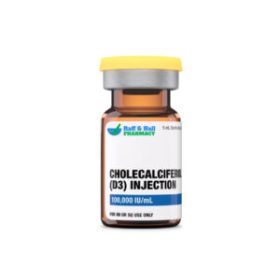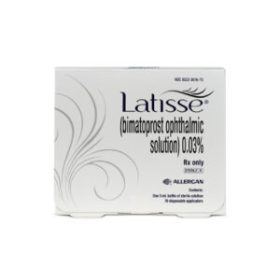Topical Numbing 1 Ointment (Benzocaine / Lidocaine / Tetracaine) (30 mL)
Topical Numbing 1 Ointment (Benzocaine / Lidocaine / Tetracaine) (100 mL)
Topical Numbing 2 Ointment (Benzocaine / Lidocaine / Tetracaine) (30 mL)
Topical Numbing 2 Ointment (Benzocaine / Lidocaine / Tetracaine) (100 mL)
Topical Numbing 3 Ointment (Lidocaine / Tetracaine) (30 mL)
Topical Numbing 3 Ointment (Lidocaine / Tetracaine) (100 mL)
Topical Numbing 4 Ointment (Lidocaine / Prilocaine / Phenylephrine HCl) (30 mL)
Topical Numbing 4 Ointment (Lidocaine / Prilocaine / Phenylephrine HCl) (100 mL)
Topical Numbing 5 Ointment (Lidocaine / Prilocaine / Phenylephrine HCl) (30 mL)
Topical Numbing 5 Ointment (Lidocaine / Prilocaine / Phenylephrine HCl) (100 mL)
Except the eyes, benzocaine; lidocaine; tetracaine is a mix of local anesthetics applied to visible mucous membrane. Mild pain management and topical anesthesia rely on these substances. Contact sensitization is more probable with benzocaine, lidocaine, and tetracaine than with other local anesthetics. The duration of contact affects the possibility of sensitizing, which can be prevented with correct application technique. These goods are not meant for extended use or application time.
This raises the threshold for electrical excitability by slowing down the rate of membrane depolarization. With results decreasing in reverse order, the blockade impacts all nerve fibers in the following order: autonomic, sensory, and motor. Effective anesthetic depends on direct nerve membrane penetration, which is obtained by topically administering the local anesthetic to the area to be anesthetized. Although systematic absorption of local anesthetics can have effects on the central nervous and cardiovascular systems, appropriate use of benzocaine; lidocaine; tetracaine is predicted to be small.
Interaction Between Benzoyl Peroxide and Topical Anesthetics
Using benzoyl peroxide (a common acne treatment) together with topical anesthetics like benzocaine can reduce how well the anesthetic works.
In one study, patients felt about 75% more pain from needle pricks on skin treated with both benzoyl peroxide and benzocaine compared to benzocaine alone.
This happens because benzoyl peroxide or its breakdown products can damage the benzocaine molecule, making it less effective.
To avoid this, it’s best not to apply benzoyl peroxide right before using a topical anesthetic, or to wash the skin thoroughly before applying the anesthetic.
Combining Local Anesthetics: Caution Needed
When multiple local anesthetics (like benzocaine, lidocaine, tetracaine, pramoxine, dibucaine, ethyl chloride, hydrocortisone) are used together, their toxic effects can add up.
Too much anesthetic in the bloodstream can cause serious side effects, sometimes life-threatening.
One rare but serious condition is methemoglobinemia, where the blood can’t carry oxygen properly, leading to symptoms like blue or gray skin, headache, dizziness, shortness of breath, and fatigue.
Methemoglobinemia can happen quickly after using benzocaine-containing products, even after just one use.
If methemoglobinemia is suspected, immediate treatment with a medicine called methylene blue is needed because giving oxygen alone won’t help.
People taking other drugs that can cause methemoglobinemia (like prilocaine) are at higher risk.
Doctors should carefully watch patients for signs of this condition during and after procedures involving topical anesthetics.
Allergic and Skin Reactions
Using local anesthetics for a long time or repeatedly can cause skin irritation, redness, itching, or even blistering.
Allergic reactions are rare but can happen, especially if the anesthetic is left on the skin too long or under bandages.
If you notice rash, swelling, or hives, stop using the product and contact your healthcare provider.
Important Safety Tips
Avoid using benzoyl peroxide right before applying topical anesthetics.
If you need to use both, wash the skin well before applying the anesthetic.
Be cautious when combining different local anesthetics to avoid overdose.
Watch for signs of methemoglobinemia, especially after benzocaine use, and seek emergency care if symptoms appear.
Use topical anesthetics only as directed and avoid prolonged or excessive use.
Manufacturers declare that these items should not be used during early pregnancy unless the healthcare professional decides the prospective benefits outweigh the unknown risks; habitual One has to be cautious regarding the application of every topical anesthetic. According to an American Dental Association study, using dental local or topical anesthetics at 13 weeks when necessary offers some proof to The study examined 21 weeks of pregnancy or later, which is probably safe and does not increase rates of negative pregnancy outcomes or other negative events. Information from the OPT study—a multicenter investigation of more than 800 pregnant patients in the early to mid second trimester who had needed dental treatments—
But when used correctly—as a single dose applied topically to mucosal tissue—systemic absorption is expected to be very low and unlikely to impact the nursing baby. Benzocaine, lidocaine; tetracaine should never be used on or near the breast or nipple of a breastfeeding woman to help to prevent infant ingestion. Infant intake should be avoided because the benzocaine constituent has been linked to life threatening episodes of methemoglobinemia in babies and toddlers under 2 years old. Although the American Academy of Pediatrics (AAP) has not reviewed this drug combination, lidocaine is considered as usually compatible with breastfeeding in need of an alternative. Think about the advantages of nursing, the possibility of baby drug exposure, and the danger of an untreated or poorly treated ailment. Healthcare professionals are urged to notify the FDA if a breastfeeding baby shows an unfavorable reaction to a drug ingested maternally.
Store this medication in its original container at 68°F to 77°F (20°C to 25°C) and away from heat, moisture and light. Keep all medicine out of the reach of children. Throw away any unused medicine after the beyond use date. Do not flush unused medications or pour down a sink or drain.
- Cetacaine Topical Anesthetic (benzocaine; lidocaine; tetracaine) package insert. Pennsauken, NJ: Cetylite Industries, Inc.; 2013 Apr.
- Exactacain Topical Anesthetic Spray (benzocaine; lidocaine; tetracaine) package insert. Cumberland, RI: Onset Therapeutics; 2008 Sep.
- One Touch Advanced Topical Anesthetic Gel (benzocaine; lidocaine; tetracaine) package insert. Odessa, FL: Hager Worldwide; 2009 Jun.
- Michalowicz BS, DiAngelis AJ, Novak MJ, et al. Examining the safety of dental treatment in pregnant women. J Am Dent Assoc. 2008;139:685-695.
- FDA Drug Safety Communication: Reports of a rare, but serious and potentially fatal adverse effect with the use of over-the-counter (OTC) benzocaine gels and liquids applied to the gums or mouth. Retrieved April 7, 2011.
- National Institutes of Health (NIH). Tetracaine monograph. LactMed: Drug and Lactation Database. Available at http://toxnet.nlm.nih.gov/cgi-bin/sis/search/f?./temp/~hiRQ6t:1.– LinkOpens in New Tab Accessed March 28th, 2012.
- American Academy of Pediatrics (AAP) Committee on Drugs. Transfer of drugs and other chemicals into human milk. Pediatrics 2001;108:776-89.
- Burkhart CG, Burkhart CN. Decreased efficacy of topical anesthetic creams in presence of benzoyl peroxide. Dermatol Surg 2005;31:1479-80.
- FDA Drug Safety Communication: FDA continues to receive reports of a rare, but serious and potentially fatal adverse effect with the use of benzocaine sprays for medical procedures. Retrieved April 7, 2011.
- Citanest Plain Dental (prilocaine hydrochloride) package insert. York, PA: Dentsply Pharmaceutical; 2010 Jun.
- Moore TJ, Walsh CS, Cohen MR. Reported adverse event cases of methemoglobinemia associated with benzocaine products. Arch Intern Med 2004;164:1192-5.





